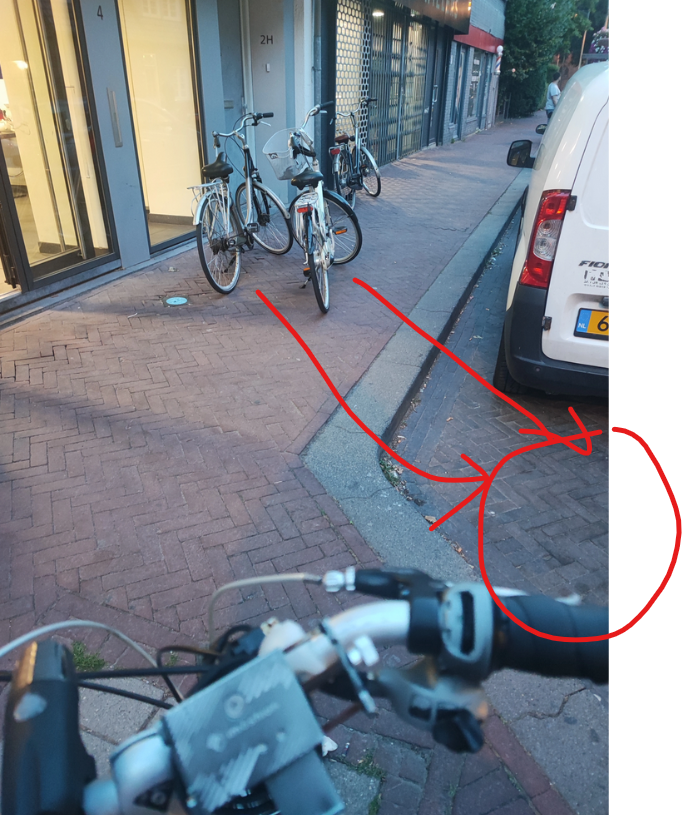Regna
Enjoying the great vista of the Fedisphere.
- 8 Posts
- 39 Comments

 292·2 months ago
292·2 months agoThe article was very well written. Unfortunately, 90% of the people I’d forward it to would be TLDR…

 25·4 months ago
25·4 months agoCows are big, strong and heavy, and docile dogs can also kill. Any kind of caution around things large or feisty enough to kill you is healthy.

 3·5 months ago
3·5 months agoWell, the standard recommended work hours would be 08-17 (8 AM to 5 PM), with one hour unpaid lunch, so 8 hours paid. And you can take those paid breaks, or even combine them with lunch. Most places (that don’t have shifts, scheduled appointments or aren’t school or health care related) allow for this kind of flexibility.
My current work place has 39 hours a week during the half year during or close to winter and around 37 hours during the summer or the months adjoining summer. Then again, most people tend to flex actual hours worked, e.g. working 4 hours on Monday and Friday, and working more hours during the same week or compensating for it later. But you HAVE to take at least 30 minutes of lunch, and the workplace tries to enforce the paid breaks as well. So some, like me, take an hour off for lunch, but use our half hour unpaid lunch and add on breaks 2x15 with pay (which is billed to our clients, as we’re legally entitled to). So I can show up anywhere between 06:30 and 11:00 (as long as I don’t have deadlines or meetings) and decide how I want to dispose the hours of my time on schedule.
And I get 7 weeks off, paid, every year. And pad it out with overtime so that I work maybe a week of overtime and get two weeks extra off for holidays.

 14·5 months ago
14·5 months agoNot all Nordic countries. The main standard work weeks in Sweden are 40 hours for office work employees. Our collective union agreements for most office work places I know of agree on at least half hour unpaid lunch and at least two 15 minute paid breaks each work day. Every place I worked for had flexible hours, which meant I could choose between turning up between 7 or 9, as long as I didn’t miss meetings and worked 40 hours a week at an average, based on monthly calculations. And any overtime was compensated with double time off and/or monetary overtime compensation.
This will of course be different for shift work or nurse/doctor positions. But I’ve never worked an 8-16 job.

 2·6 months ago
2·6 months agoBut not all moms/mums are created equal.
deleted by creator
deleted by creator

 6·11 months ago
6·11 months agodeleted by creator

 12·1 year ago
12·1 year agoWell, and he also has Greek ancestry, so it’s a delicate diss without going overtly into politics.

 3·1 year ago
3·1 year agoThank you, I had forgotten some of the memes and jokes from that era.
In order to be accurate, most of the news communities want the headline of the post to be the same as the one in the article. And as the news sites use “slam”, well…

 5·1 year ago
5·1 year agoMindfulness for me, now, is to be aware of myself and my surroundings. It started with meditation during a one year chronic pain remedy program, and helped with learning to deal with all the noise that comes up (pain, stress, intrusive thoughts). To not ignore them, but to observe them. Detach myself somewhat and just “look” at it. This helped me to eventually do this during monotonous activities: brushing my teeth, doing dishes, combing cats, vacuuming, even emptying litter boxes. Then to external activities where I am observing the things outside and inside me: waiting in line, sitting on the bus, hiking, drinking tea at a café.
When I exit the state I feel a bit more refreshed. If I need more, and have the ability, I will go and sit in my favourite spot and meditate deeper.

 191·1 year ago
191·1 year agoI disagree regarding lying down for bed. Never teach your body to associate the relaxation of meditation with sleep. Unless you only need it for immediately before you sleep to calm your mind.
I can now have mindfulness while doing activities (not driving ofc). Your body will do what you teach it, and I’ve stopped falling asleep meditating when I removed it from bedtime.
Yes, the world needs more meditation.

 8·1 year ago
8·1 year agoAs if we Swedes wouldn’t have mandatory education about the major religions of the world during school already. And I am pretty sure almost every school library carries copies of the quran, just as the bible and some other major scriptures.

 3·1 year ago
3·1 year agoAmong the first leading paragraphs I was worried that this merely was what Bhutan claimed. That it was followed up by WWF and other organizations is great.

 3·1 year ago
3·1 year agoThat would require an inter-instance mod cooperation. Not impossible, but between some instances it seems like the Iron Curtain.

 551·1 year ago
551·1 year agoAnd worse than that, the article states:
Mrs Scott was unable to free herself and, as Cliff drove away, she was dragged under the Go North East vehicle and remained pinned under its rear wheels for almost an hour.

 54·1 year ago
54·1 year agoDead-easy, they aren’t locked to a permanent object, just move them behind the car, and then they’ll neither be stolen nor your fault if someone else parks their hoods into the bikes.





It’s actually designed for rain, and adapted for the extreme rains expected with the torrents and downpours resulting from climate change. It looks nice upstream, and the work will continue downstream where there are currently porous drain planes and culverting.